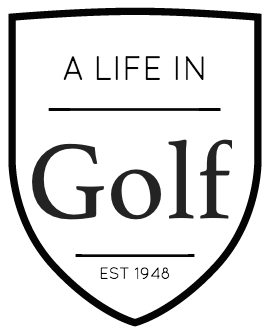High Performance At Golf Australia
It came as a surprise when I learned Australia has more top 100 ranked men and women professional and amateur golfers per capita than the United States and every other country in the world. How has a country with 26 million people been able to achieve this lofty position? The answer is Brad James and his team at the High Performance section of Golf Australia.
In 2010 Brad was the head coach of the men’s golf team at the University of Minnesota. Following a call from Golf Australia, a somewhat similar organization to the USGA, he headed back to his home country to lead the High Performance section. “The goal of the high performance program is to win Olympic medals, win majors and support men and women golfers as they advance toward the top 100 in the world,” said Brad.
After 13 years of developing and refining the program James and Golf Australia are seeing success. “From 2005 to 2018 Australians won four majors. From 2019 to 2022 we have won four,” James told me. “This is a generational program, not a short term experiment. Our goal is to have one or more athletes reach the top 100 in the world over a three year period. It takes eight to ten years to develop a woman to win a major and ten to twelve for a man.”
“Our program provides financial support, sports psychology, physical therapy, nutrition, strength and conditioning and caddies,” Brad explained to me.
“We have four tiers of players. Players in the first five years of professional play, are tier four and our top focus. The transition from amateur to professional play is difficult. We stay close to them. They need to understand they are the CEO of themselves. Our program teaches young professionals how to be a CEO, how to manage their support team. We have CEO camps in Australia and the US. If you are not a CEO we will not fund you.”
Tier three is made up of elite amateurs in the last two years before turning professional. “We help them with their tournament schedule: where to play? where to stay? We get them a caddie. Finding a caddie who will help them plays a key role. Many times amateurs have never had a caddie. Then when they turn pro they suddenly have this person with whom to deal. We fund the travel for the player and the caddie. We help them with a competition pathway, training, environment and transition integration.”
Thus by the time Grace Kim, now a top woman professional, turned pro she had played in many professional events. Her playing as a amateur in pro events prepared her for a professional career.
Tier two is for players age 14-18 and tier one includes ages 10-14. “We are only looking to connect with the parents of the younger kids so they will trust us when the kids are older.”
Unlike sport and golf in the United States, the government funds a significant portion of the budget for Golf Australia. “Our purpose is to bring more people into golf in Australia,” James said. “The goal is to win Olympic medals, win majors and have players in the top 100 in the world.”
“If we have the top golfers in the world more people in Australia will play golf and spend money on golf which helps the economy. We want to inspire more people to play more golf.”
Remember how golf in the US took off when Tiger Woods was at his peak? A similar effect is occurring in Australia because Cam Smith won the Open last summer. It’s the same concept.
The High Performance team have tracked the career path of top 100 players over the last several decades. Most follow a similar track. When they first turn pro they maybe ranked as far down as 1200 in the world golf rankings. Over the next few years the ranking steadily aims for the top 100. It’s called the pathway.
“If a player is outside the top 100 after five years they will not get funded,” James said. This doesn’t mean the player has to quit. Golf Australia just isn’t going to give them money. They may have access to other Golf Australia services, but not funding. “A player outside the top 100 will not attract spectators, thus will not be driving people to the game,” James said.
The Australian Institute of Sport, a government agency, funds Golf Australia, as it does all sports. When Brad arrived the budget was $500,000. Today it is $5,000,000. “If we need more money we look for sponsors and individuals to help. It’s a part of my job,” Brad said.
“Continuity of the program the last ten years has been important,” said Brad. “We have been successful because of the support on the Golf Australia board, the Australian Institute of Sport and being able to put the right people in the right place.”
Brad has 10 employees and 30 contract people that make up High Performance. There are coaches, nutritionists, strength and conditioning people and others who guide those in the program. There are currently 50 players in the program, 25 of them rookie pros.
Rookie pros are given direct cash distributions. Decisions are made as to who gets money based on data over the players past few years and the experience of the staff. Money is repaid by agreeing to contribute 4% of earnings.
The program may not work in the United States, Brad concedes. “With college golf, the American Junior Golf Association (AJGA), Ledbetter Academy and others, there would be no coordination of goals,” Brad said. “A college coach is going to develop a player differently. He is preparing players for a collegiate event in the near future. We would be thinking about his or her career 10 years in the future.
Golf Australia is not about just green grass golfers. Anything that will get people into golf, putt-putt, Top Golf, and par 3 courses are all promoted.
Brad James and Golf Australia have set in place a machine to develop great men and women golfers. With a goal of getting more people into the game, they are improving the economics around golf in Australia. Don’t be surprised when more Australians follow Cam Smith, Minjee Lee, Jason Day and Hanna Green get to the winners circle in A Life In Golf.
Brad James






